People
Pioneering Video Artist Bill Viola Dies at 73
'Media technology is not at odds with our inner selves, but in fact a reflection of it,' he once said.
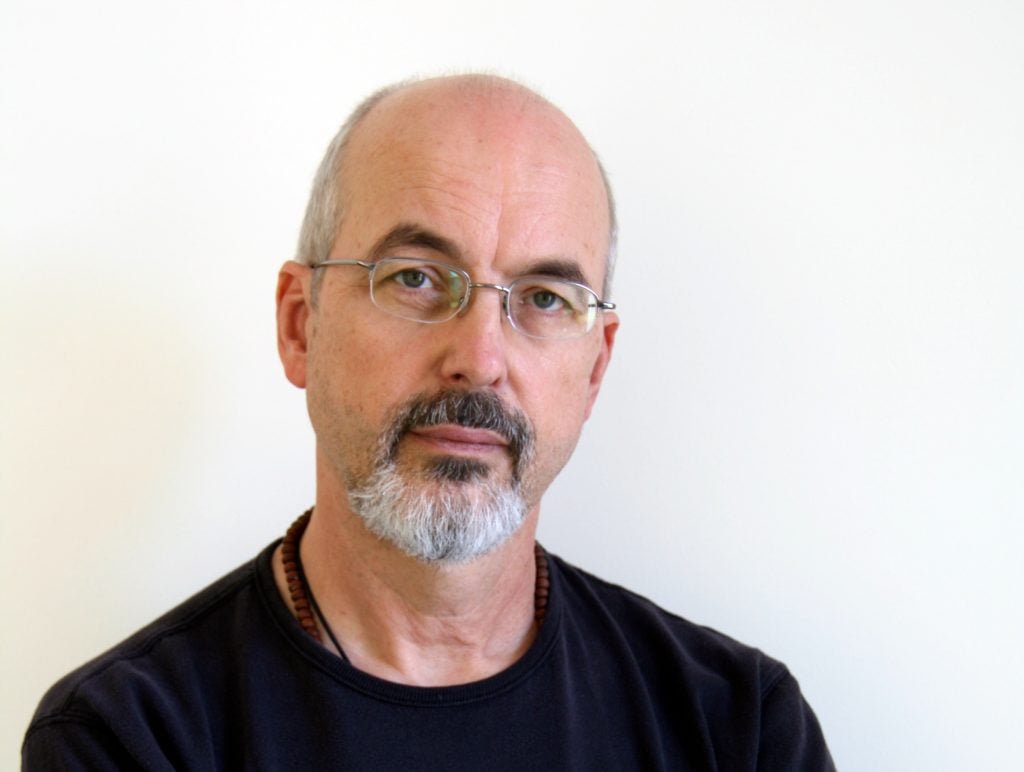
'Media technology is not at odds with our inner selves, but in fact a reflection of it,' he once said.

Jo Lawson-Tancred

Artist Bill Viola, who elevated the fledgling medium of video art into something worthy of awe, imbuing it with the kind of spiritual transcendence found in the Old Masters, died on Friday at his home in Long Beach, California. He was 73. His wife, Kira Perov, confirmed that the cause was complications of early onset Alzheimer’s disease. He had been in hospice care since 2020.
Over his five-decade career, Viola demonstrated the full capacity of video, using it to make art that is probing and profound. “I see that media technology is not at odds with our inner selves, but in fact a reflection of it,” he once said. In addressing universal metaphysical themes like time, space, and human consciousness, his work gained mainstream appeal as well as critical acclaim.
Viola’s breakthrough came in 1995, when he represented the United States at the 46th Venice Biennale with a group of five installations, titled “Buried Secrets.” The best known of these is The Greeting, based on the Mannerist painter Jacopo Pontormo’s The Visitation (1528). In Viola’s version, three women in ancient dress meet, converse and, in some cases, embrace. One of Viola’s key techniques was to slow down footage—here, 45 seconds becomes 10 minutes—so as to emphasize subtle cues of body language, without ridding a scene of its ambiguity.
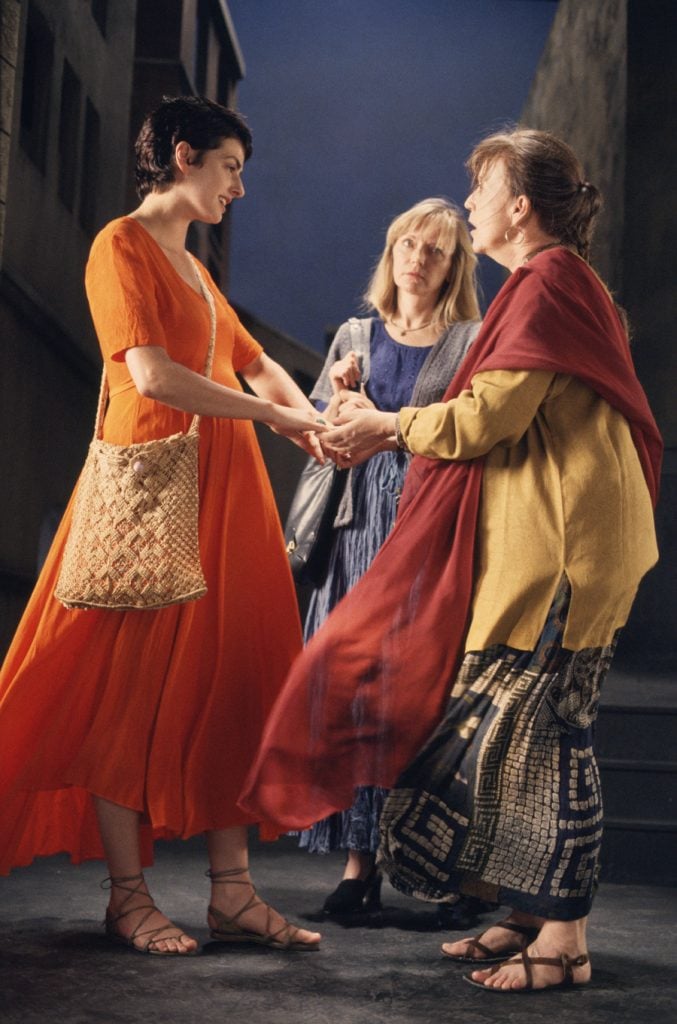
Bill Viola, The Greeting (1995). Image courtesy of James Cohan Gallery.
Born on January 25, 1951, in Queens, New York, William John Viola Jr. was raised by a devout Episcopalian mother and a father who worked for Pan American Airways. In elementary school, he was captain of the TV Squad.
A formative experience occurred at the age of 6, when he fell into a lake while on vacation with his family. “I saw probably the most beautiful world I’ve ever seen,” he said. “It was colorful and there was light and these plants were moving. I see it regularly, I see it constantly almost, in my mind.” It brought about the revelation that “there’s more than just the surface of life. The real thing is under the surface.”
The incident most directly informed his 2000 piece Ascension, in which a body crashes into a body of water, arms stretched wide in a cruciform, and slowly sinks into the dark abyss, as a blue light shines down above the surface.
Water appears through Viola’s work. He once described video as “electronic water,” noting its reliance on a constant flow of electrons, the same particles that power human bodies—and the world. The Raft (2004) uses forceful blasts of water as a device to disrupt a group of strangers who could be standing at a bus stop. They are crowded together but, in their minds, appear to occupy remote realms. Buffeted together, they are forced to struggle in a writhing mass. Are they changed by the experience?
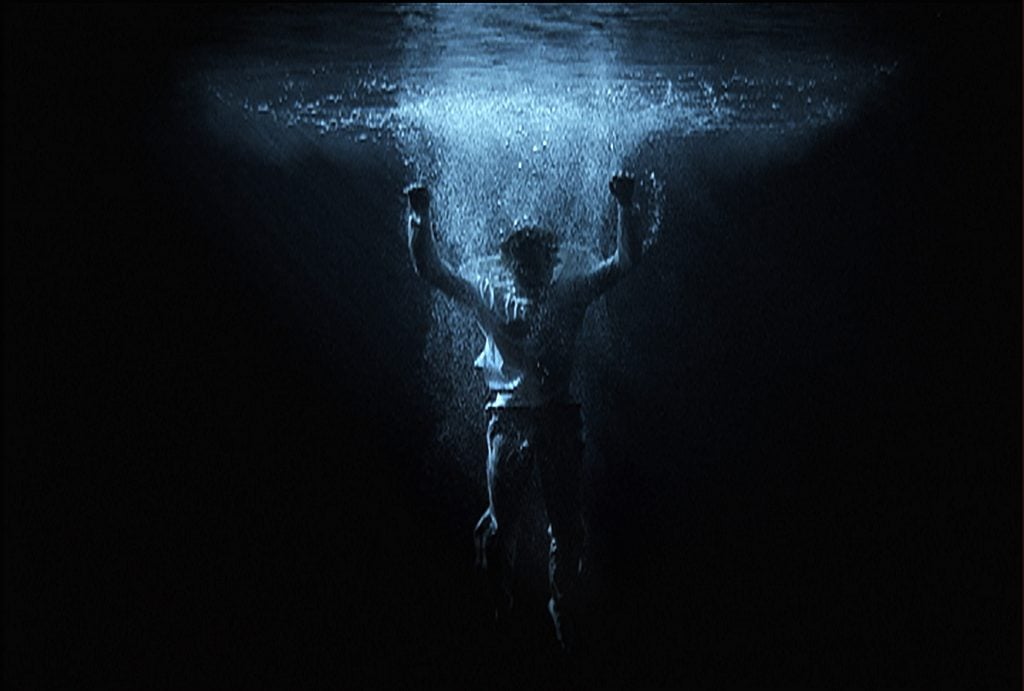
Bill Viola, Ascension (2000). Image courtesy of James Cohan Gallery.
While pursuing a BFA in Experimental Studios at Syracuse University, Viola was hired as a part-time assistant by his friend David Ross, the first curator of video art at the local Everson Museum of Art. Just after graduating in 1973, he worked under the composer and pianist David Tudor on the experimental sound installation Rainforest IV.
A year later, Viola moved to Florence, Italy, and became a technical director at art/tapes/22, an early video art studio run by Maria Gloria Conti Bicocchi. This work exposed him to some of the form’s earliest pioneers, including Bruce Nauman, Vito Acconci, and Nam June Paik. Meanwhile, the city offered Viola the chance to immerse himself in the work of giants like Michelangelo, Leonardo, and Botticelli. It would prove to be an intoxicating, fateful combination of influences.
During a stint in New York as artist-in-residence at the WNET Thirteen Television Laboratory, Viola made He Weeps for You (1976), an installation in which a camera zooms in on drop of water emerging from a brass valve, magnifying an image within and projecting it onto a large screen. It was shown at Documenta 6 in 1977 and the Museum of Modern Art in 1979.
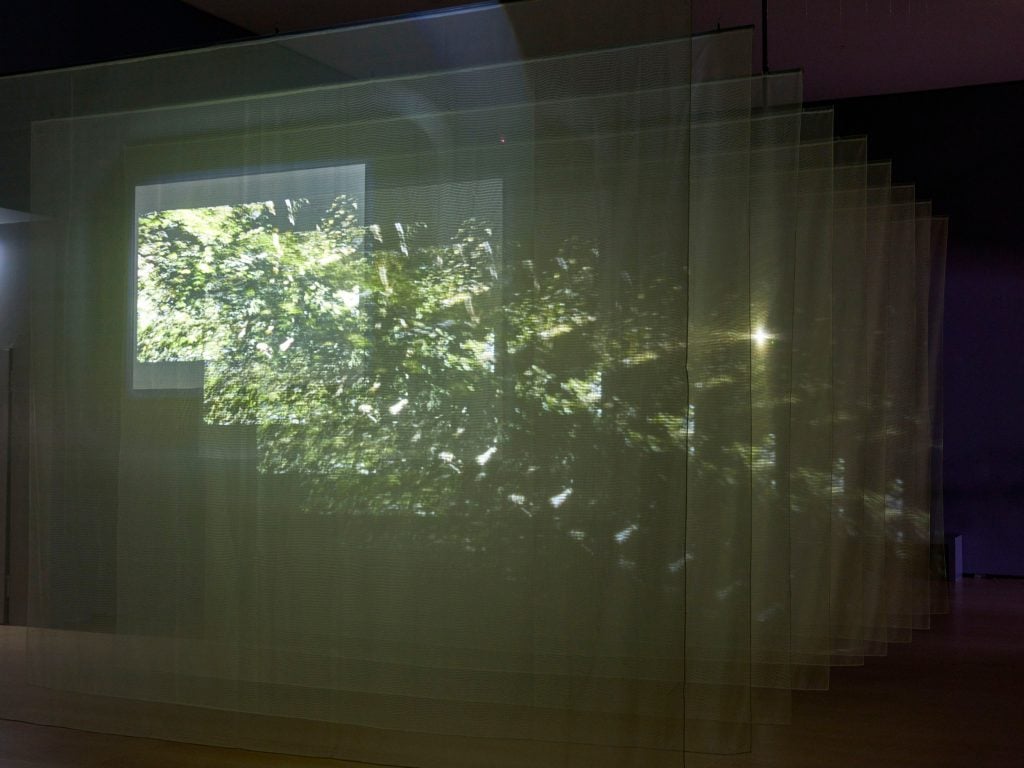
Installation view of “Bill Viola: A Retrospective” at Guggenheim Bilbao. Photo courtesy of Guggenheim Bilbao.
Viola had begun traveling extensively around the Pacific region, visiting Indonesia, India, and the Solomon Islands. He was eventually invited to exhibit at La Trobe University in Melbourne, Australia, by the director of its cultural program, Kira Perov. The couple married in 1980 and moved to Japan for a year and a half, where they studied Zen Buddhism before settling in Long Beach. Their close artistic collaboration would be lifelong, with Perov becoming executive director of Viola’s studio.
After returning to the U.S., Viola was instrumental in establishing video art’s place among more traditional art forms. His Theater of Memory (1985) was the first video installation to be included in the Whitney Biennial, in 1985. It features a strange, tree-like sculpture covered in flickering lanterns that appears to have fallen in front of a screen playing an eery video montage of apparently random vignettes. The work is immersed in the sound of crackling static.
A flood of institutional recognition followed. In 1997, soon after representing the U.S. in Venice, Viola received a major mid-career retrospective at the Whitney that traveled to the Los Angeles County Museum, the Stedelijk Museum in Amsterdam, the Museum für Moderne Kunst in Frankfurt, the San Francisco Museum of Modern Art, and the Art Institute of Chicago.
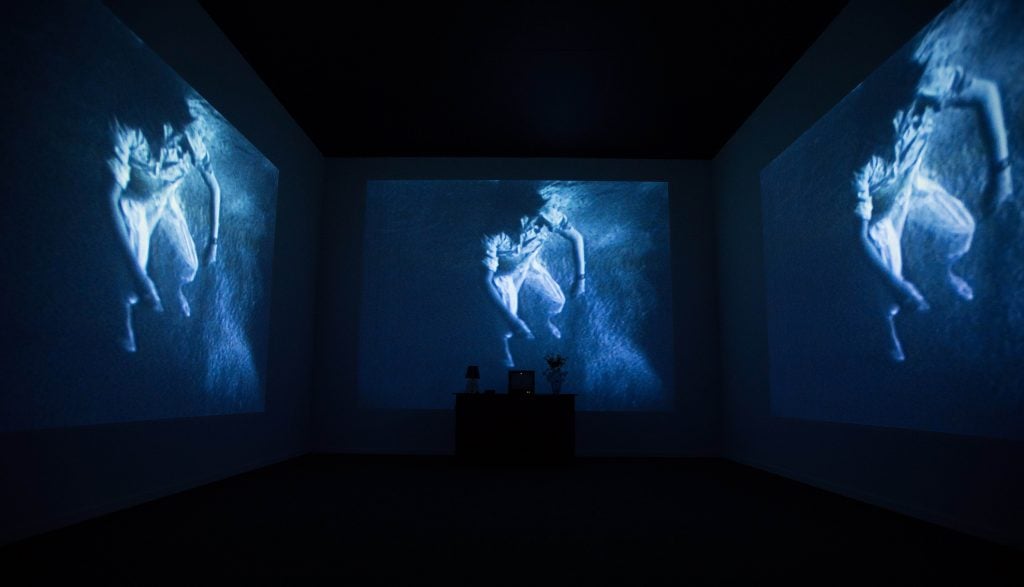
Installation view of “Bill Viola / Michelangelo: Life, Death, Rebirth” at the Royal Academy of Art in London. Photo: David Parry.
Embracing grand themes and time-honored iconography, Viola showed how new media can embrace and extend, rather than challenge, historical movements. In recent years, his work has repeatedly been presented alongside Michelangelo’s.
In 2010, Emergence (2002)—in which two women watch in wonder as a young man’s body, white like marble, rises from a cistern—was installed beside David (1504) in Florence. Observance (2004), a meditation on mourning based on Dürer’s Four Apostles (1526), was placed next to the Pietà (ca. 1555) at the Duomo Museum in Florence as part of the 2017 exhibition “The Electronic Renaissance.” And in 2019, the Royal Academy of Art in London mounted “Bill Viola/Michelangelo: Life, Death, Rebirth,” an acclaimed exhibition with 12 of the American artist’s video works and 14 drawings by his Renaissance forebear.
Viola was awarded a MacArthur “Genius” Fellowship in 1989 and Japan’s prestigious Praemium Imperiale in 2011. His work has been exhibited at leading institutions around the world, including the Barnes Foundation, the Museum der Moderne in Salzburg, Austria, the Royal Academy of Art in London, the Guggenheim Bilbao, Yorkshire Sculpture Park, London’s National Gallery, the J. Paul Getty Museum, the Moderna Museet in Stockholm, and the Reina Sofía in Madrid. Two of his video works are permanently installed at St. Paul’s Cathedral in London.
Reflecting on their three-decades working together, Viola’s New York dealer, James Cohan, said, “My initial encounters with Bill Viola’s work left me awestruck by his ability to marry technology with a deeply felt poetic, one that addressed the essential experience of life and death. Using video and film—the moving image—a medium which we all take for granted, to plumb the depths of human emotion will be Viola’s lasting contribution to art history.”